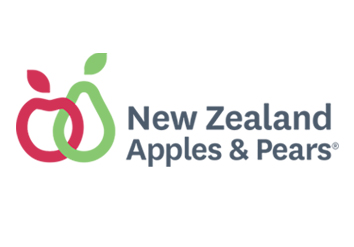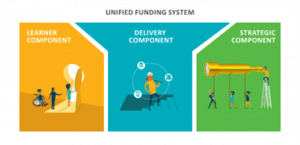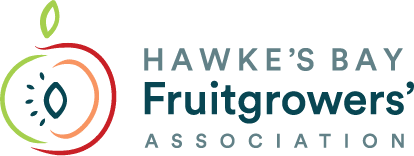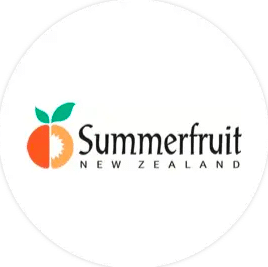
Erin Simpson, Manager Labour and Capability, New Zealand Apples & Pears
This month marks 6 months since Muka Tangata , People, Food and Fibres Workforce Development Council was stood up in Wellington. Muka Tangata is one of 6 Workforce Development Councils (WDC) that the Ministry of Education have created to bring about the biggest reform of vocational education in over 30 years.
The reform of vocational education or RoVE is a collection of new entities and policy changes that together will create a much more future focussed system of work based training across the entire country from senior school qualifications into pre-employemnt and trade training and then on into industry training at Level 2-7 up to but not including degree level programmes. The key changes that will be most visable to industry are .
1. The bringing together of all sixteen polytechs around the country under one giant polytechnic named Te Pūkenga or the New Zealand Institute of Skills and Technology. As New Zealand’s largest tertiary education provider, Te Pūkenga will have the national and regional reach to become a long-term skills training partner for firms and industries, enabling learners to move between workplaces and other educational offerings and locations as their needs change. It will be the cornerstone of a cohesive, sustainable vocational education system that helps improve wellbeing for all New Zealanders and supports a growing economy that works for everyone.
2. The creation of 6 WDC , Workforce Development Councils were established on the 4th of October 2021 through the Reform of Vocational Education (RoVE) . The role of the WDCs is to ensure the vocational education system meets industry needs and gives a stronger voice to Māori business and iwi development. WDCs will set standards, develop qualifications, and help shape the curriculum of vocational education for the future. Many of the functions of the Industry Training Organisations (ITO) have been moved into the WDC.

Waihanga Ara Rau (Construction and Infrastructure) Workforce Development Council represents industries including Construction, Concrete, Plumbing, Infrastructure, Water, Gas, Electricity, Telecommunication and Roading.
Find out more at Waihanga

Toi Mai Workforce Development Council represents industries including Creative, Technology, Entertainment, Hairdressing and Barbering, Makeup Artistry, Skincare, Journalism, Radio and Television Broadcasting, Gambling, and Sports & Recreation.
Find out more at Toi Mai

Toitū te Waiora (Community, Health, Education, and Social Services) Workforce Development Council represents industries including Care Services, Disability Services, Education and Education Support Services, Funeral Services, Health Services, Public Order Safety, Regulatory Services, Skin and Nail Therapy Services, Social Services, and Urban Pest Control.
Find out more at Toitū te Waiora

Hanga-Aro-Rau (Manufacturing, Engineering and Logistics) Workforce Development Council represents industries including Manufacturing, Processing, Extractives and Drilling, Transport, Postal, and Warehousing.
Find out more at Hanga Aro Rau

Muka Tangata (People, Food and Fibre) Workforce Development Council represents industries including Dairy, Sheep and Beef, other livestock, Arable, Horticulture, Fishing, Seafood Processing, Winemaking, Aquaculture, Livestock farming, Sports Turf Management, Silviculture & Harvesting.
Find out more at Muka Tangata

Ringa Hora (Services) Workforce Development Council represents industries including Advisory Services, Aviation, Cleaning Services, Business Services, Contact Centres, Financial Services, Hospitality, Local Government, Real Estate, Retail, Security Services, State Sector, and Tourism and Travel
Find out more at Ringa Hora
3. The Regional Skills Leadership Groups (RSLG) Will identify, and support better ways of meeting future skills and workforce needs in our regions and cities. They are part of a joined-up approach to labour market planning which will see our workforce, education and immigration systems working together to better meet the differing skills needs across the country. Functioning independently, the groups are locally based across fifteen regions of New Zealand and regionally enabled, and supported by a team of data analysts, advisors and workforce specialists at the Ministry of Business, Innovation & Employment. The groups inform, coordinate, and create links with local initiatives that impact their region’s workforce supply:
• Schools and careers advisors will get clearer information about current and future skills that will be in demand, to support school leavers to make good career decisions.
• Employers and schools will get support to connect to attract school leavers into local training and jobs that will be needed.
• Employers can act on the groups’ advice to tackle barriers to employment and productivity growth, by pooling resources and offering attractive job opportunities.
• Training providers, skills hubs and local economic development initiatives will have the right information to tailor their programmes to meet their region’s labour force and skills needs.
4. The last element of RoVE is the new Unified Funding System (UFS) which will fund the delivery of vocational education and training that is focused on learners, supports employers, and addresses national and regional skill priorities. In December 2021, Cabinet approved the design of a new unified funding system (UFS) for vocational education and training (VET). The UFS is an essential element of the Reform of Vocational Education (RoVE). It will unify funding for provider-based study at levels 3 to 7 (non-degree) and for all industry training.
The Hawkes Bay region and Horticulture sectors are well represented across all of the above RoVE elements with Erin Simpson sitting as Chair of Muka Tangata and Co- Chair of the HB RSLG , it is important that Horticulture employers, growers and post-harvest operators have a strong voice throughout this process of change to ensure that the workforce and skills we need for tomorrow are designed and funded today.
Kia whakatōmuri te haere whakamua: ‘I walk backwards into the future with my eyes fixed on my past’





